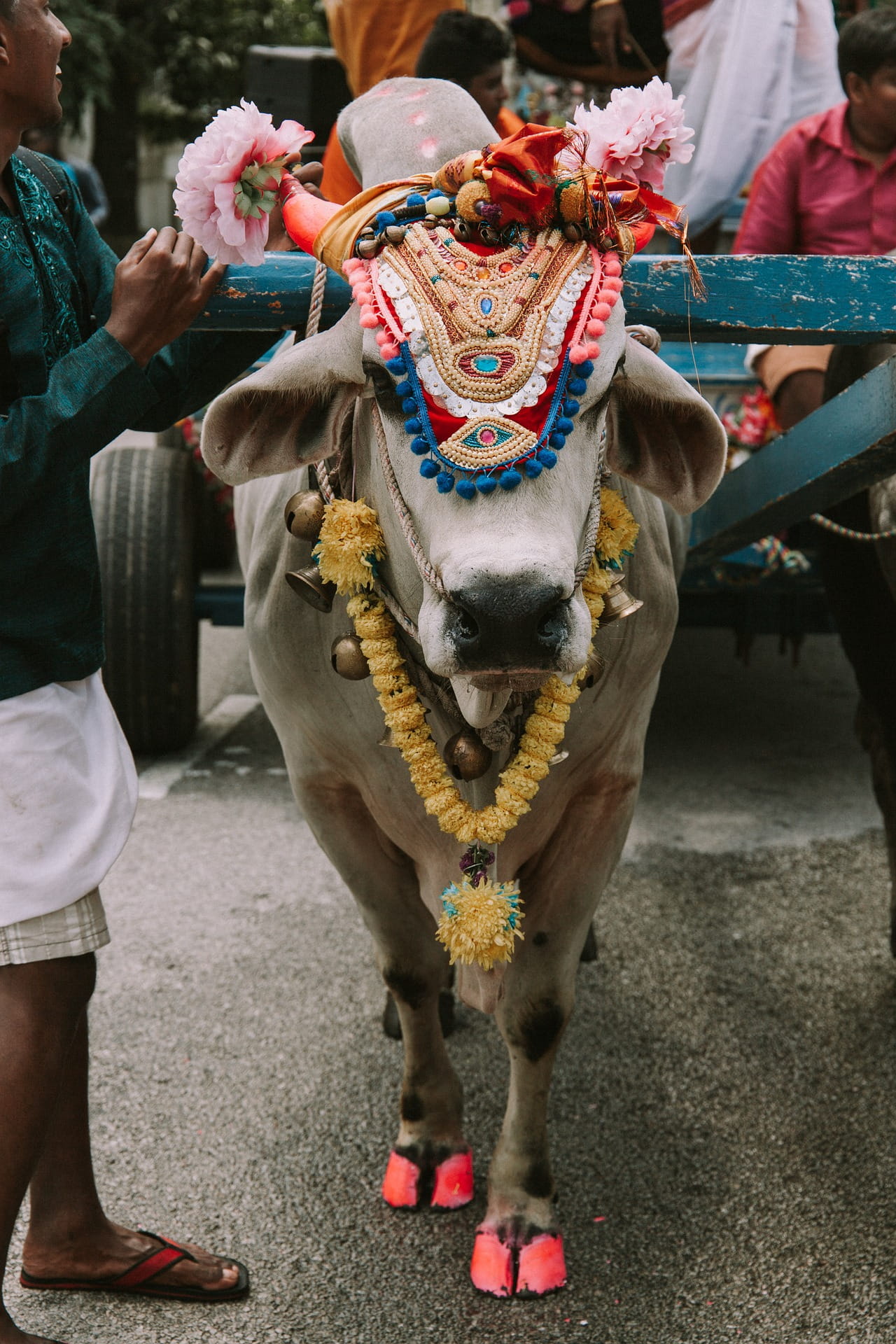NEW YORK (RNS)-- A torn sheet of paper with the word "peace" on it lies among quarters and dimes at a shrine to the Hindu goddess Parvati, the archetypal mother.
Visitors felt moved to leave these offerings here, but the shrine is not in a temple. It's in the American Museum of Natural History, part of the exhibit "Meeting God: Elements of Hindu Devotion."
"We have people coming and giving offerings in the exhibition daily," said Stephen Huyler, guest curator and an anthropologist who has traveled in India for 30 years.
The Parvati shrine is one of 10 recreated shrines in the exhibit, which is on view through February 2002. The exhibit is not a consecrated space, but was designed to introduce visitors to Hindu beliefs, gods and goddesses and methods of worship in a cultural context.
"It shows how one in six human beings live," Huyler said. "It shows how the sacred affects their daily lives, and it's a means for understanding more about ourselves."
There is a need for understanding the faith. Although an estimated 1.2 million people in the United States are Hindu, a recent survey found that 83 percent of Americans had little or no familiarity with Hindu beliefs and practices.
A video of one of those practices, morning prayers at the Ganges River, opens the exhibit. The displays that follow are grouped by themes, including worship in the home, community, and temple, and at religious festivals. Each section features color photographs taken by Huyler, images of the gods, and objects ranging from wall hangings to processional trumpets. Earth-toned walls and Indian music highlight the setting.
The shrines in each section were designed to create a particular experience for the viewer. A life-size re-creation of a tree shrine was inspired by thousands of similar community shrines in India, Huyler said.
When the exhibit opened in September, a Hindu priest recited scripture, sprinkled holy water and lit incense to venerate this shrine.
The images of gods and goddesses, often housed in shrines, are believed to be personifications of the divine, so they are treated with great respect. To convey this sense of awe, the re-created shrines in the exhibit, like the shrine to Parvati, have wooden doors and contain a photograph of an image of a god used in worship in India.
"When you open those doors, there's a light shining on the picture, and you're in the darkness, so the focus is on god," said Mary McGee, associate professor of classical Hinduism at Columbia University and a consulting curator. "That's very much like the experience of the worshipper, where the focus is on god."
Worshippers appeal to individual gods and goddesses because most Hindus believe in a universal divine that takes on many forms. The divine contains a complement of opposites that balance all existence. The exhibit features three principal deities: Shiva, creator and destroyer of existence; Vishnu, protector of the universe; and Shakti, divine feminine strength. Each deity has other incarnations and relationships. For example, Parvati and Shiva have a son Ganesha, who is the remover of obstacles.
"We think of the divine as being one and many simultaneously," said University of Florida religion professor Vasudha Narayanan. "You can think of each one of the gods as kind of a hologram of divinity. They contain within them the entire universe."
Believers seek "darshan"--a Sanskrit term that refers to meeting god --and that Huyler used to help name the exhibit.
"You look into god's eyes and god looks into you," McGee said, describing darshan. In Hinduism, that intimate relationship with the divine is very important, she said.
Other sections of the exhibit explore aspects of that relationship, such as healing, divine possession and efforts to improve karma, the sum of good and bad acts in this and previous lives, which influences reincarnation.
The exhibit ends with photographs of evening prayers and of the elderly who renounce their more worldly pursuits to improve their karma.
A display of photographs of personal shrines belonging to Hindus and others in the New York area accompanies the exhibit, and reinforces the unique aspects of relationships with the divine.
"There are as many different ways to imagine god as there are people," McGee said. "That's one of the riches of the Hindu tradition."
When individuals do make the effort to contemplate the infinite, Narayanan said, "It should boggle the mind."

